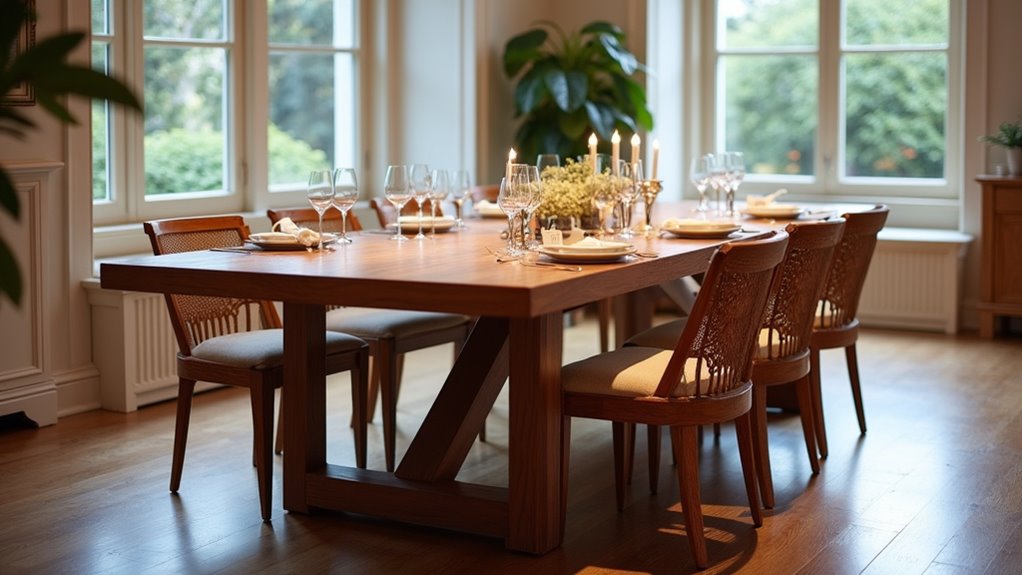Dining tables typically range from $50 to over $3,000. Entry-level models are often made from MDF or rubberwood, while mid-range options feature solid hardwoods and accommodate four to six people. High-end tables are crafted from premium materials, showcasing intricate designs for larger spaces. Factors such as size, wood type, and craftsmanship influence pricing. Consumers can choose from a variety of styles and materials to fit their budgets and needs, revealing further insights about the market landscape.
Key Takeaways
- Entry-level dining tables range from $50 to $300, typically made from MDF and rubberwood.
- Mid-range tables cost between $300 to $800, featuring solid hardwoods and accommodating four to six people.
- High-end tables are priced from $1,000 to $3,000, designed for larger dining areas with intricate styles.
- Luxury tables cost over $3,000 and are known for their exceptional craftsmanship and aesthetic appeal.
- Table pricing is influenced by size, materials, design exclusivity, and customization options.
Overview of Dining Table Price Ranges

The landscape of dining table pricing encompasses a wide spectrum, catering to diverse consumer needs and preferences.
Entry-level dining tables range from $50 to $300, typically constructed from materials like MDF and rubberwood, often featuring simple designs and light finishes.
Mid-range options, priced between $300 and $800, offer more varied table designs incorporating solid hardwoods and stylish features, accommodating four to six people. Many of these mid-range tables showcase the craftsmanship and quality associated with local artisans, providing buyers with a solid combination of value and appeal.
Mid-range dining tables, ranging from $300 to $800, feature solid hardwoods and stylish designs for four to six diners.
In contrast, high-end tables—ranging from $1,000 to $3,000—emphasize substantial quality with solid woods and intricate styles, designed to serve as focal points in larger dining areas. Moreover, luxury and designer tables, priced above $3,000, present unparalleled craftsmanship and aesthetic appeal. This broad spectrum reflects the interplay of table design and dining styles across consumer markets. Additionally, seating capacity varies based on table size, significantly impacting the overall cost and choice for buyers. For instance, the El Cerrito Rustic Solid Indian Rosewood Trestle Pedestal Dining Table accommodates large gatherings easily, highlighting the variety in options available at higher price points.
Factors Influencing Dining Table Costs
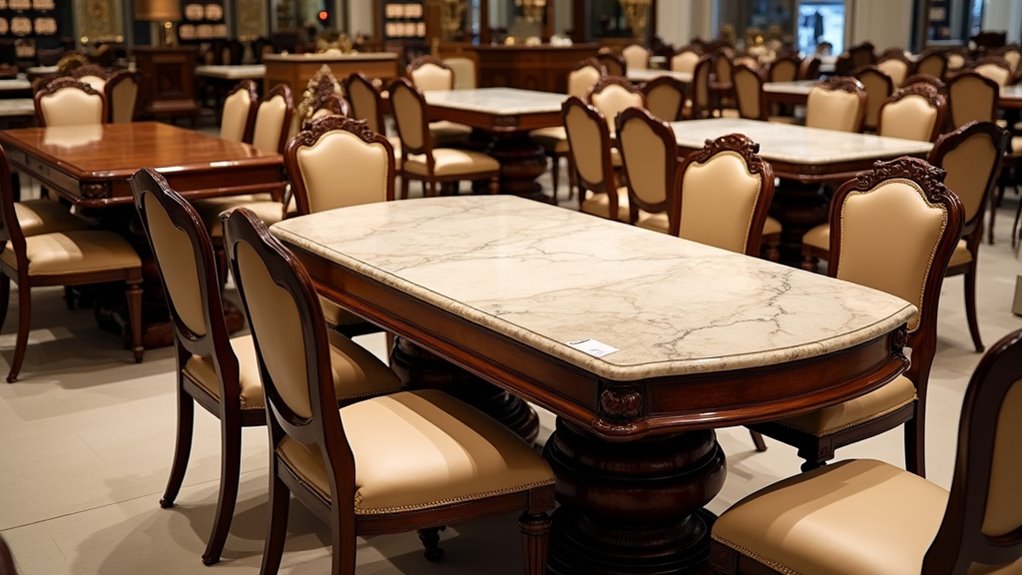
While evaluating dining table costs, several factors emerge as significant determinants of pricing. Design exclusivity plays a crucial role; intricate designs or custom features, such as extendable leaves, amplify labor and material costs.
Larger tables demand more resources, substantially raising base prices, particularly for lengths over eight feet. Craftsmanship quality also heavily influences costs; handcrafted items produced by skilled artisans involve increased labor intensity and attention to detail, often resulting in higher price tags compared to mass-produced variants.
Sustainable sourcing and premium materials add additional layers of expense. Furthermore, customization options like built-in storage or unique finishes can elevate pricing, reflecting the time and materials required to meet specific consumer needs and preferences. For example, options like a luxurious live edge oak table highlight the artistry of craftsmanship and sustainability, further influencing overall costs.
Cost Breakdown by Wood Types
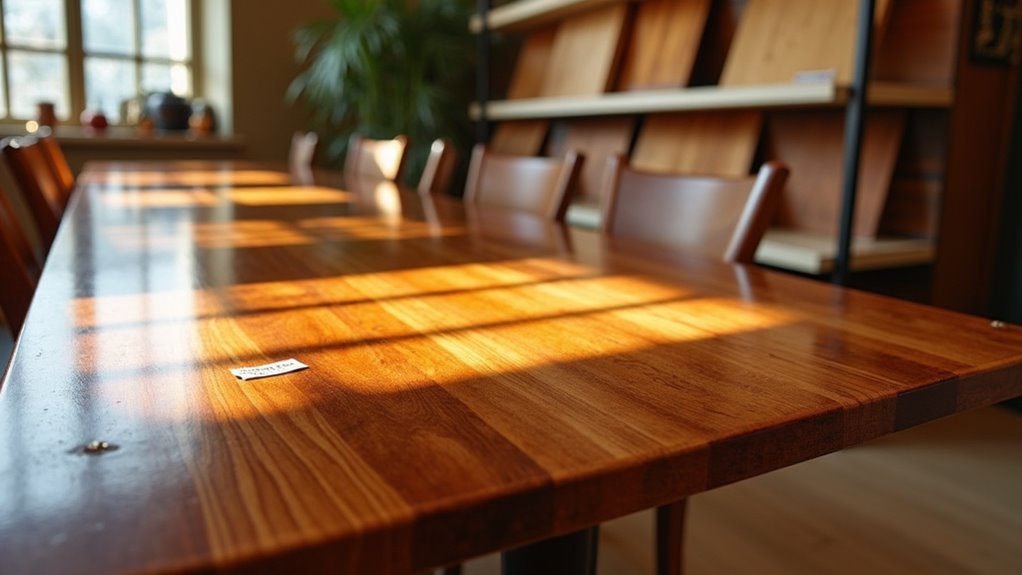
As various wood types offer distinct characteristics and aesthetics, the cost of dining tables can fluctuate significantly based on the material chosen.
Wood quality plays a pivotal role in determining price, with hardwoods like oak, walnut, and cherry commanding higher costs due to their durability and appealing finishes. Oak tables typically cost around $4,250, while walnut features a luxurious price of approximately $4,800.
Wood quality significantly impacts dining table prices, with hardwoods like oak and walnut being the most expensive due to their durability and finishes.
Cherry and maple offer slightly lower prices, at around $4,500 and $4,200, respectively. Additionally, options such as reclaimed wood and pine provide affordable alternatives, catering to different style preferences.
Ultimately, consumers must balance the material’s cost against their desired aesthetics and functionality when selecting a dining table. For example, oak’s durability and natural finish enhance the grain visibility, making it a preferred choice for many households seeking both style and longevity.
Pricing Examples Based on Table Sizes
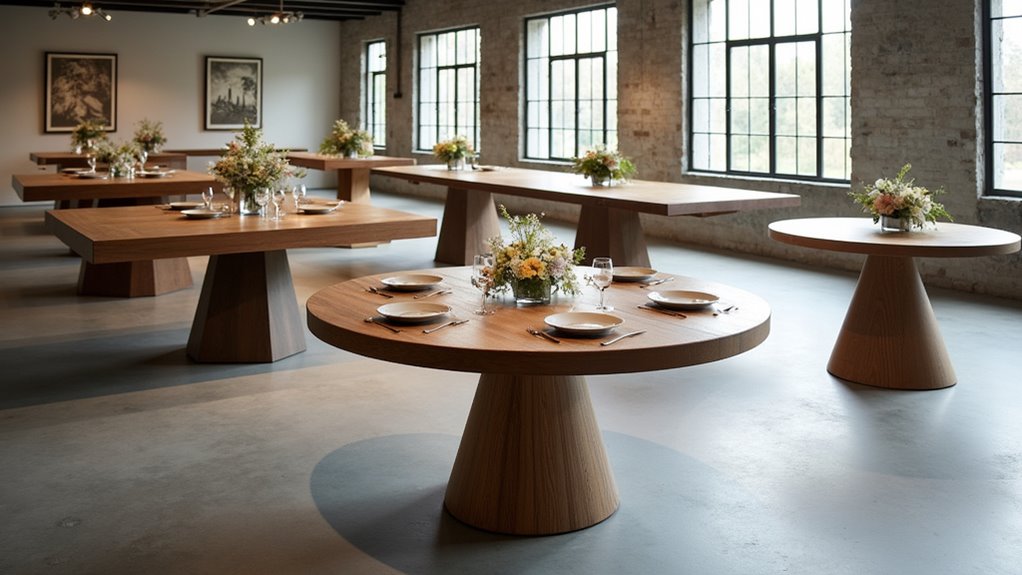
When selecting a dining table, one crucial aspect to consider is the price variation based on size, which directly influences the overall budget. Dining tables are categorized into small, medium, and large sizes, each with distinct price ranges that affect table styles and seating arrangements.
| Table Size | Price Range |
|---|---|
| Small (Seats 2-4) | $69.99 – $299.99 |
| Medium (Seats 4-6) | $500 – $700 |
| Large (Seats 6-8+) | $700 – $1,500+ |
| Extendable | $200 – $800 |
Understanding these pricing examples enables consumers to align their needs with their budgets, ensuring a fitting choice for varied household demands and aesthetics. Additionally, farmhouse dining tables provide a rustic aesthetic that can enhance the visual appeal of your dining space while being durable and timeless.
Market Comparisons From Leading Retailers
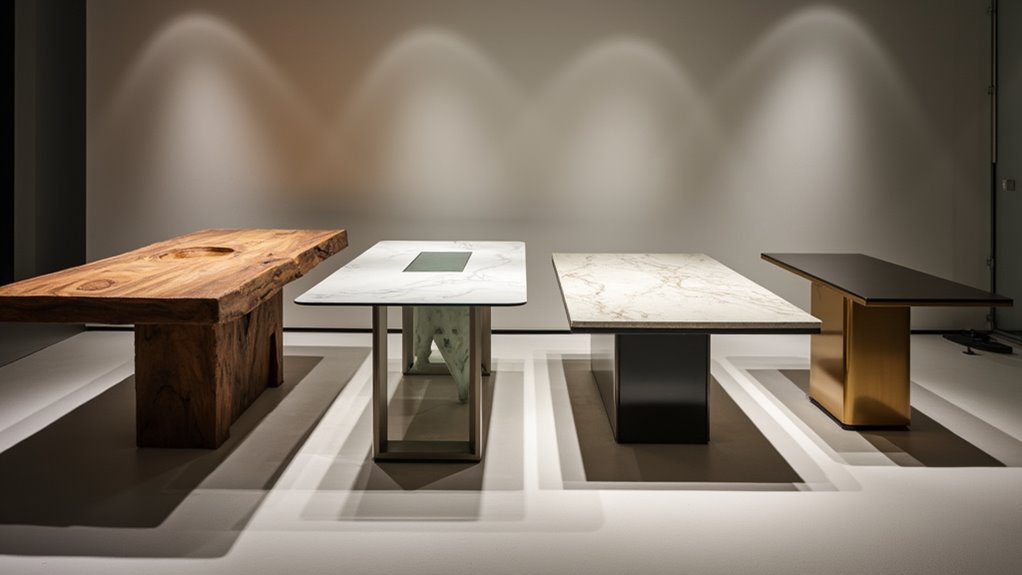
Numerous retailers offer a diverse range of dining tables, with pricing and features tailored to various customer needs and preferences. Each retailer utilizes different strategies to appeal to style preferences across multiple market segments:
Retailers target diverse customer preferences through varied pricing and unique strategies in the dining table market.
- Target: Affordable to mid-priced options; frequent discounts on contemporary tables.
- IKEA: Focus on natural materials; modular designs with broad pricing range.
- Ashley Furniture: Mid-tier emphasis with intricate designs; offers both basic and extended features.
- Bed Bath & Beyond: Value bundles on dining sets; competitive pricing for coordinated solutions.
- Discounts: Many retailers, like Target and Bed Bath & Beyond, attract budget-conscious customers through regular promotional offers.
These strategies reflect how retailers position themselves in response to diverse customer tastes and budget considerations, shaping the dining table market.

